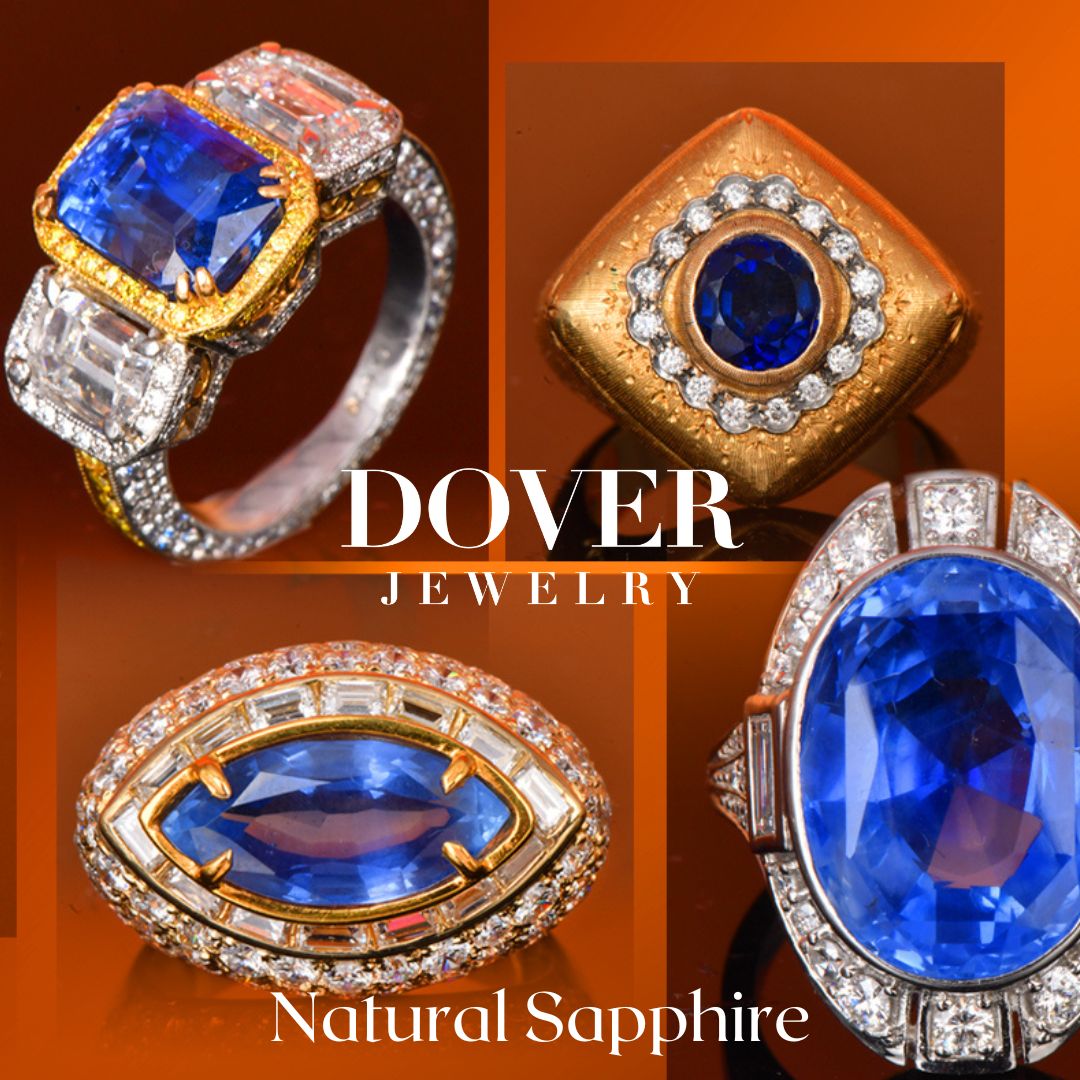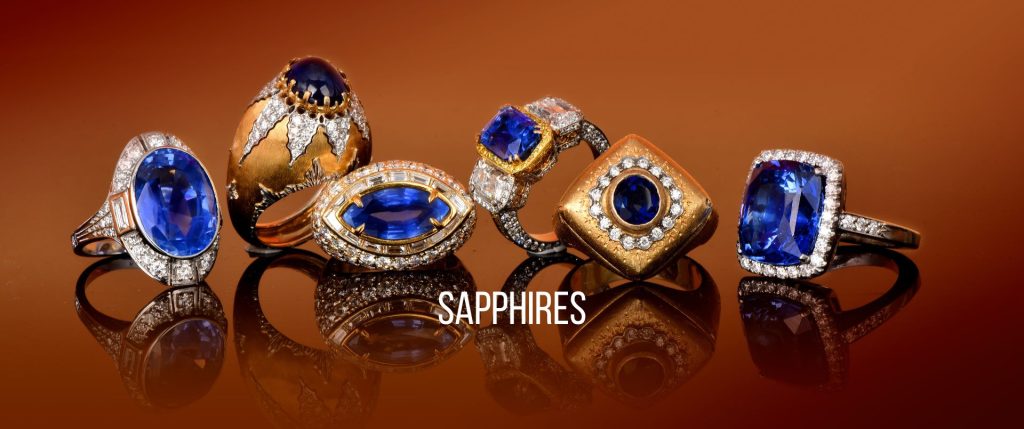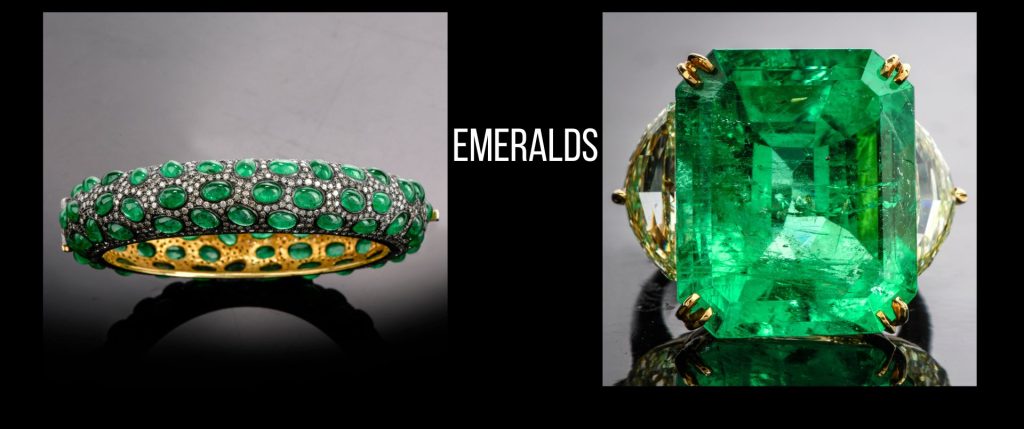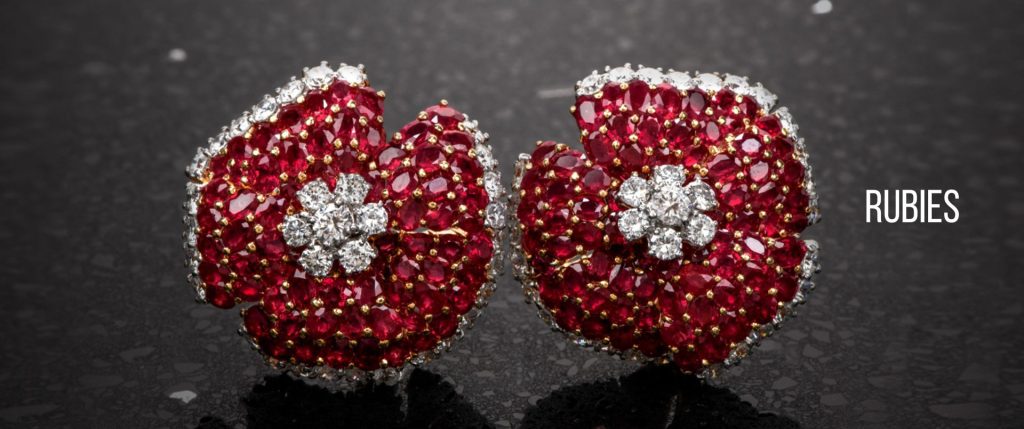
A Comprehensive Guide to Colored Gemstone Treatments in Luxury Jewelry
Colored gemstones like sapphires, emeralds, and rubies are more than just beautiful; they are valuable, rare, and often treated to enhance their color and clarity. As the demand for colored gemstones continues to grow in the luxury jewelry market, it’s essential to understand how these gemstones are treated, the protocols involved in the enhancement process, and how to identify both natural and artificially enhanced stones. At Dover Jewelry, we aim to provide you with an expert guide to make wise choices when selecting colored gemstones for your luxury jewelry collection.
See our collection of colored gemstone jewelry.
The Art and Science of Gemstone Treatment
Before purchasing a colored gemstone, it’s crucial to understand the common treatments used to enhance their natural properties. While some treatments are well-known and accepted in the industry, others are considered controversial and could affect a gemstone’s value, durability, and long-term appeal. Let’s explore the most common treatments for sapphires, emeralds, and rubies, how these enhancements are performed, and how to identify them.
Sapphire Treatments: Enhancing the Classic Beauty of Blue Gemstones
Sapphires are one of the most coveted gemstones, known for their range of colors, from deep blue to shades of pink, yellow, and green. The majority of sapphires used in high-end jewelry undergo some form of treatment to improve their color and clarity. The most common treatments for sapphires include heat treatment, laser treatment, and diffusion treatment.
1. Heat Treatment for Sapphires
Heat treatment is the most common and accepted form of enhancement for sapphires. This process involves heating the sapphire to high temperatures (typically between 1,400 and 1,800°C) to improve the stone’s color and clarity by removing inclusions and enhancing its natural hue. Heat treatment can intensify the blue color of sapphires or lighten stones that are too dark.
Protocols and Identification:
- Heat-treated sapphires are considered stable and can be disclosed easily by jewelers.
- The process typically does not affect the gemstone’s structure significantly, but it can alter the stone’s internal inclusions, making it more transparent.
- A gemologist can often identify heat treatment using advanced spectroscopy or inclusion observation under magnification.
2. Laser Treatment
Laser treatments are applied to sapphires to remove surface-reaching inclusions or to improve clarity. A laser beam is used to vaporize the inclusion, which improves the appearance of the stone.
Protocols and Identification:
- Laser-treated sapphires will often show small surface cavities or a distinctive “laser drill hole.”
- This treatment can sometimes be identified by the presence of fine fractures on the surface, detectable with magnification.
- Laser treatment is typically not as common as heat treatment but is more prevalent in higher-value stones.
3. Diffusion Treatment
Diffusion treatment involves introducing a foreign substance (typically a metal like titanium or iron) into the sapphire’s surface by heating it to a high temperature. This alters the color of the stone, typically darkening or adding a vivid hue to the stone’s surface.
Protocols and Identification:
- Diffusion-treated sapphires often display color zoning, where the color is more intense on the surface and fades toward the center of the stone.
- Diffusion treatment can sometimes be detected using a microscope, where one can see the color difference between the surface and the interior of the gemstone.
Emerald Treatments: Enhancing the Lush Green Hue of Nature’s Gemstone
Emeralds are one of the most admired gemstones, famous for their deep green color. However, emeralds often contain internal fractures and inclusions known as “jardin” (French for “garden”), which can affect the stone’s overall appearance and durability. As a result, most emeralds undergo some form of treatment to enhance their visual appeal and increase marketability.
1. Oil and Resin Treatment for Emeralds
The most common and widely accepted treatment for emeralds is the application of oil or resin. The treatment is done to fill in surface-reaching inclusions, improving the clarity and making the stone appear less cloudy.
Protocols and Identification:
- The use of oil or resin is considered a standard enhancement, and most high-quality emeralds on the market have undergone this treatment.
- Emeralds with oil or resin treatment often show slight surface imperfections under magnification, as the oil or resin may leak over time.
- This treatment is usually disclosed by jewelers, and it’s essential to note that the oiling process is temporary and may need to be re-applied over time.
2. Laser Treatment
Laser treatment for emeralds is less common but used to enhance clarity. This process involves using a laser to treat surface inclusions, improving the transparency of the stone.
Protocols and Identification:
- Laser-treated emeralds can be identified by the presence of small, surface-reaching fractures or drilled areas.
- Advanced gemological tests and magnification can reveal signs of laser treatment, which may affect the stone’s value.
Ruby Treatments: Enhancing the Red Hue of the King of Gemstones
Rubies, one of the most prized gemstones, are known for their rich red hues. Like sapphires, rubies often undergo heat treatment to enhance their color and clarity, as well as other methods such as glass filling.
1. Heat Treatment for Rubies
Heat treatment is the most common enhancement method for rubies. The process improves the stone’s color, clarity, and overall appearance by heating the ruby to high temperatures. Heat treatment is widely accepted in the industry and is often used to enhance rubies from Burma, Thailand, and Mozambique.
Protocols and Identification:
- Heat-treated rubies typically display improved color and clarity, with a more intense red hue.
- This treatment is stable and permanent, though it may affect the inclusions present in the ruby, making it more transparent.
- Identifying heat treatment can be done by observing the ruby’s internal inclusions, as the treatment can cause changes to the formation of the inclusions.
2. Glass Filling
Glass filling is a less common but still widely used treatment for rubies. This involves filling surface cracks and fractures with lead glass to improve the stone’s clarity and color. While this treatment is effective, it can affect the durability and value of the stone.
Protocols and Identification:
- Glass-filled rubies often show signs of the filling, including a noticeable surface appearance that may appear cloudy or milky under magnification.
- The filling may also cause the stone to be more prone to breaking, and this treatment should be disclosed when sold.
Designer Trends in Colored Gemstones
Paolo Costagli: Pushing the Boundaries of Gemstone Artistry
Renowned jewelry designer Paolo Costagli is redefining gemstone artistry. His bold creations feature sharp-edged designs inspired by ancient Egypt, often incorporating tessellating gold shapes and perfectly calibrated pink sapphires. Costagli’s unique use of gemstones has earned his work a place in the luxury jewelry market, where he seamlessly blends ancient artistry with modern craftsmanship.
His designs reflect the growing demand for colored gemstones in high-end jewelry, especially with statement pieces like wide cuff bracelets. These pieces not only showcase the stunning beauty of gemstones but also highlight the evolution of gemstone use in luxury jewelry collections.
 Read more about Designer Paolo Costagli
Read more about Designer Paolo Costagli
The Enduring Appeal of Natural Diamonds
While colored gemstones are on the rise, natural diamonds continue to hold their ground as symbols of luxury and elegance. Iconic pieces like Cartier’s “Diamond by the Yard” demonstrate the timeless beauty and sophistication of natural diamonds. Despite the growing popularity of colored stones, diamonds remain an enduring staple in the luxury jewelry market, offering an unmatched level of prestige.
Learn more about natural diamonds and their lasting value.
How to Choose Colored Gemstones Wisely in Luxury Jewelry
When selecting colored gemstones for luxury jewelry, it’s essential to choose stones that are untreated or have undergone acceptable treatments. Here’s how to make sure you’re getting the best:
- Ask About Treatments: Always inquire about the treatments a gemstone has undergone. Reputable jewelers will disclose whether a gemstone has been treated and provide information on the type of treatment.
- Use Trusted Gemologists: Rely on GIA-certified gemologists to evaluate gemstones and confirm their authenticity and treatment history.
- Look for Transparency: Seek stones with transparent treatment histories. Know what enhancements were used and ensure they are clearly disclosed.
- Check Durability: Be aware of how treatments like glass filling can affect a gemstone’s durability. Choose stones that will withstand long-term wear, especially for engagement rings or other high-use jewelry.
At Dover Jewelry, we provide only the highest quality colored gemstones, ensuring each piece meets the strictest standards for authenticity and treatment disclosure.
Contact Dover Jewelry to learn more about our collection of colored gemstones.






